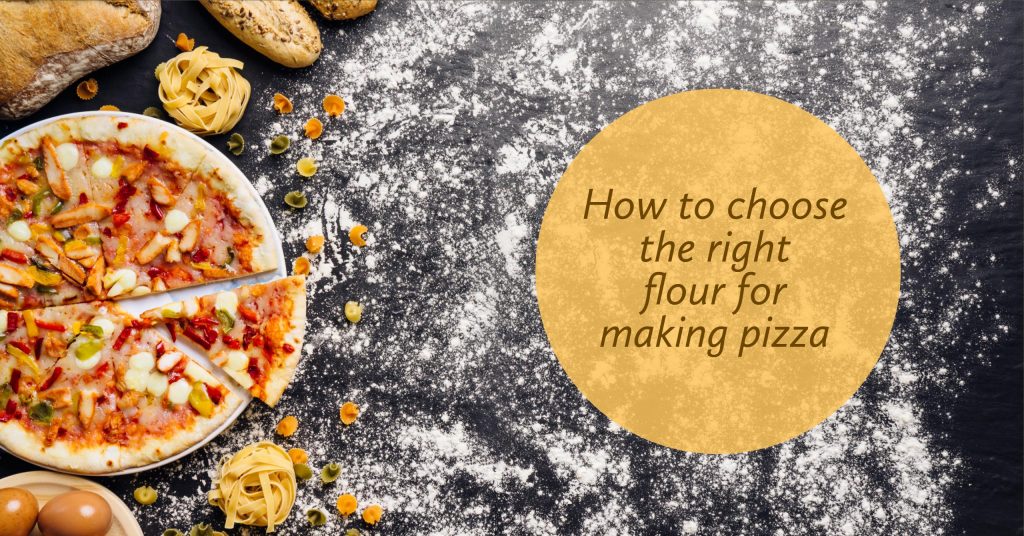When developing a pizza recipe, the dough is the canvas of your work of art. Oven type, proofing techniques and flour variety can have a major impact on the finished product. In this article, we will focus on how to choose the right flour for making pizza and how different flours can change the desired texture.
Understanding the role of gluten
When choosing the right flour for your pizza dough, it’s very important to start by understanding the role of gluten in dough development.
Simply put, the protein content in flour determines the amount of gluten formed in the dough. As a result, gluten content dictates the texture of the crust. Gluten is formed when starch molecules bond together in contact with water and create an elastic system. The more protein in the flour, the more gluten is formed and thus, the robust texture of pizza crust is created. The more gluten there is, the chewier the texture of the crust.
For example, fine and soft flours such as pastry flour have low gluten content (8-10%). Therefore, low protein flour is great for creating light, fine textured products such as muffins and cakes.
On the opposite side of the scale, bread flour has the highest protein content (12-14%) and creates a very elastic matrix of gluten. Bread flour is great for pizza and breads with larger bubbles and an airy texture.
Finally, all-purpose flour is somewhere in the middle of pastry flour and bread flour, with a protein content of 10 to 12%. As the name suggests, all-purpose flour is a universal flour, good for most products but it does not excel when it comes to specialized pizza making.
Choosing the right flour for your pizza
Different flours will yield a different result based on their level of protein. However, using the right type of flour in combination with a proprietary proofing technique and the perfect balance of ingredients is key to creating your very own custom crust. Below are four common types of flours and their impact of the end product.
Click here to view the infographic: How to choose the right flour for making pizza
Captuo “00” Flour
Italian flours are classified by the fineness of the grind and the amount of bran and germ removed during the milling process. Italian flours range from “00” to “0”, “1” and 2”. In this case, Caputo “00” is the finest flour milled in Italy. Its protein content is usually 12.5% and results in dough that is high in gluten and a chewy but not excessively rubbery crust. The dough ball will have a firm consistency which makes it perfect for stretching, rolling and creating the perfect shape. Caputo “00” Flour is ideal for thin crusts, with moderate elasticity such as the Neapolitan style pizza. It creates the traditional puffs around the rim that get charred in spots in the oven.
Bread Flour
Bread flour has the most protein content, generally around 12 to 14%. It provides the most dough structure. Using bread flour enhances the crust’s crispier texture. Due to the high gluten content, the dough will rarely tear when handled. However, some people find it difficult to work with as the dough will have the tendency to bounce back and can be difficult to shape. Bread flour can be used in thin crust pizzas to create a crispy texture on the outside with a chewy inside.
All-purpose Flour
All-purpose flour has a moderate protein content of 10 to 12%. Although it tears more easily due to the lower protein content, all-purpose flour is good for most pizza crusts such as Neapolitan, New York Style and deep dish. All-purpose flour is considered a universal flour but advanced pizza makers should consider specialty flours for niche pizza varieties.
Semolina flour
Semolina flour is made from durum wheat and has a high protein content. Using semolina flour gives pizza a sweet flavor and an appealing yellow buttery color. Semolina flour is usually used in thick crust pizzas to create a cake-like consistency and to enhance a rich and sweet flavor.
To develop your own custom crust recipe, contact us at artisticdough@mimifoods.ca or give us a call at 905-660-0010.


0 Comments